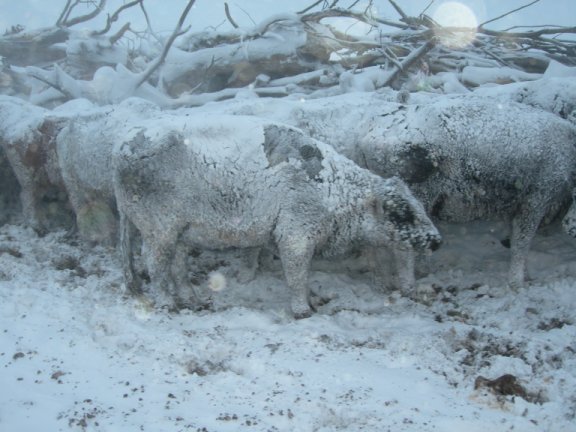
By Lindsay Chichester, UNL Extension Educator
Many ranches and farms spend a lot of time working on business plans, mission statements, employee training, goals, and financial management, but how many spend time discussing a disaster plan? Nebraska, along with neighboring states suffered catastrophic events in 2013; flooding, fires, blizzards, and drought. A disaster plan may not have saved acres of corn or numbers of cattle, but it may help people move forward, and be ready if there is a next time.
A disaster plan may help protect property, facilities, animals, and people. A good starting point in developing a plan is developing an emergency contact list. Some emergency numbers that you may want to include would be: employees, neighbors, veterinarians – both local and state, extension service, trucking company, brand inspector, highway patrol, and a contact person outside of the disaster area. It seems that we all know these numbers off of the top of our heads, but those stored in a cell phone may not be accessible; and in a high stress event, you may not be able to recall these numbers from memory. Also, think through where your livestock will go if they need to leave your premise; possible locations may include the local salebarn, the vet, or the neighbor’s place.
A livestock emergency readiness checklist may be a useful tool to develop. Some things to consider may be a backup source of power, sufficient fuel supplies – for a generator, equipment, and vehicles, fire extinguishers, livestock water and feed (enough for two to three days), on-farm veterinary aid, and access to livestock records and/or insurance policies – if needed. Often times, disasters are not covered by insurance companies, unless specifically listed in the policy. This may be a good time to review your policy.
A ranch or farm map may be of benefit to first responders and neighbors. This can be a basic outline of facilities with shop or barn names. Additionally, you may want to include bodies of running water (creeks, streams, rivers, etc.), fence lines, and power lines. If you need to dispatch help and those responding do not know where the calving barn is, it will slow response times. On the map you should also include the storage locations of herbicides, pesticides, or fuel. The location of these may dictate how an emergency is responded to and with what equipment.
Once your disaster preparedness plan is in place, communication is key! It should be shared with your family, employees, and others you think may be involved if a crisis strikes. While many of these things seem simple, they can be things that are overlooked in times of high stress. Additionally, having these materials in a location where others will know where to find them enables them to carry out your wishes if you are unable to be present. You should review this plan annually to ensure the information is current and relevant.
Some information that may be helpful in developing a disaster plan can be found at these links or by contacting the Nebraska EDEN (Extension Disaster Education Network) representative.
http://www.eden.lsu.edu
http://readyag.psu.edu/
http://www.ag.purdue.edu/extension/eden
http://www.ag.ndsu.edu/disaster